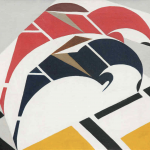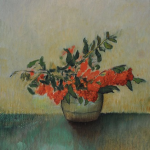
Jaume Plensa is a sculptor. He studied at the Escuela de la Llotja and later at the Escola Superior de Belles Arts de Sant Jordi in Barcelona. He also attended the Henry Moore Foundation (United Kingdom) and the Atelier Alexander Calder (France).
His first exhibition was in Barcelona, his home and workplace. He gained worldwide recognition with his towering sculptures of women’s heads in public spaces. These have closed eyes and offer an almost meditative appearance. He has completed over thirty large-scale projects in cities like Dubai, London, Nico, and Tokyo. In Chicago, faces of hundreds of residents were displayed in the Crown Foundation at the Millennium Park.
In 2015, Plensa had a highly acclaimed exhibition at the Basilica di San Giorgio Maggiore during the Venice Biennale.
Three times, Plensa’s sculptures were displayed at ARTZUID. In 2011, Grand Latent Blanc, a crouching figure in a relaxed pose, stood tall. Yoga or fetus, who can say? Geographic indications are also added to the sculpture. In 2015, a series of sculptures were on display: Heart of Trees. Seven sitting bronze human figures, each embracing a tree. Duna was also displayed, an immense woman’s head made of steel. In 2019, Sanna, one of Plensa’s characteristic elongated women’s heads made of granite, was on display. This young girl also exudes introspection and tranquility in an increasingly hectic society.
When Leeuwarden was the European Capital of Culture in 2018, Plensa’s Love was one of the eleven fountains, one for each of the Frisian cities. Plensa’s work has been exhibited in various galleries and museums in and outside of Europe.
www.ftn-books.com has the BEELDEN AAN ZEE catalo now available.


























































